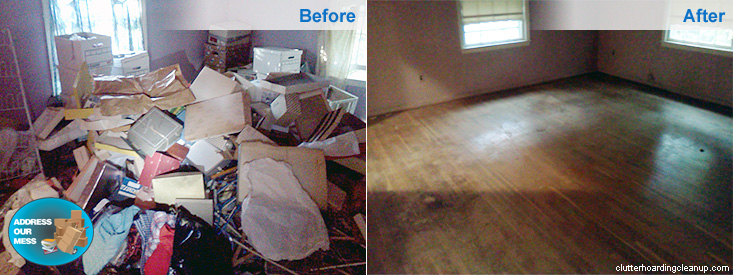Hoarding Types and What Causes Hoarding
Hoarding affects people in unique ways and situations. Some people hoard food, others hoard paper. Some hoard clothing and knick knacks, others hoard animals and toys. Just as each type of hoarding is unique, so are the ways in which a person can develop the condition. Development does not occur overnight. Instead, the hoarding condition takes time to evolve into a more serious situation that many hoarders find themselves so desperate to get out of with hoarding cleaning treatment.
While there may be many causes on record, Address Our Mess case managers have identified a few causes of hoarding below.
Traumatic Events
A traumatic event by definition is an experience, event, or series of occurrences that cause stressful reactions due to physical, emotional, or mental harm. Traumatic experiences affect individuals in very unique ways. For example, if two people may be involved in a car accident, one may be able to walk away from it without any issues while another may be emotionally traumatized by it.
Due to these tragic events, people may find themselves searching for comfort in collecting items and hoarding them in their homes. These traumatic events can create an emptiness in a person’s psyche, creating a need to fill that void with material things and requiring serious clutter cleanup. Eventually, an emotional attachment is formed between the hoarder and their items, making it impossible for them to choose to throw these items away, even if they are proven to be detrimental to their health or home.
Shopaholic
Another self-inflicted form of therapy a person may exercise on themselves is becoming a shopaholic. Shopping for any and everything may become a form of release or pleasure in a person’s mind. While the thrill of buying new items may satisfy some sort of idea or ego at the time the purchase is made, many problems arise. Along with financial stress and burdens, shopaholics have nowhere to put their newly purchased items.
Hoarded homes of shopaholics often house a large number of brand new items, still sealed in packages, wrapped up, with price tags still on them. Some shopaholics purchase items, lose them in their mounds of clutter, then buy to brand new versions of the same item they’ve lost in their own home.
Fear of Loss
While some people fear losing their loved ones, their jobs, or their money, others fear the loss of their personal items.
One of the many hoarding questions is, “Why would a hoarder save something that has no value or worth?” Hoarders suffering from the fear of loss often use the excuse, “I might have use for that later!” Only later never comes.
Hoarders with fear of loss refuse to discard anything in their homes because they believe that they will use the item again in the future, no matter how broken or soiled or rotten the item has become.
Low Self Esteem
Self-esteem is a person’s perceived value of their own worth. While low self-esteem may play a small part in any of the previously listed causes of hoarding, depression or low self-esteem in and of itself can cause a person to react in erratic ways.
Hoarders with low self-esteem also collect or hold onto items because they believe that it increases their self-worth. Not all forms of hoarding involve gross filth or biohazards. In most cases of those with low self-esteem becoming hoarders, areas of the home like the bathroom and kitchen are often kept clean and sanitary. However, mounds and piles of clutter often hinder the livability of their home, causing dangerous physical hazards and social impacts.
Explaining the dangers of hoarding to someone with low self-esteem can be easier with the use of a before and after photo. Example before and after hoarding photo:

Learned Behavior
Sadly, a person suffering from the hoarding condition who refuses to seek help for themselves and their family may pass on their detrimental behavior to their children or other family members.
If a child is born into a household that is hoarded with an unhealthy amount of items, this sense of learned behavior will become their “normal.” Along with subjecting a child or other family members to the fire hazards and asphyxiation dangers brought on by mounds of cluttered items, hoarders promote the spread of diseases, insects, viruses, and other pathogens by leaving their home in a cluttered and filthy condition.
For more information on causes of hoarding and ways to determine courses of action for recovery, please call the telephone number listed above or contact us online.